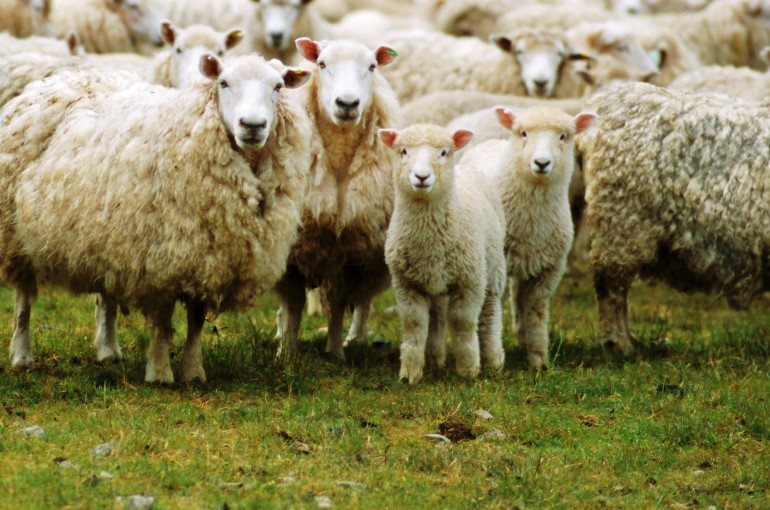Coccidiosis is caused by the parasite Eimeria, affecting the health and life of sheep. Farmers need to grasp the detailed causes, prevention and effective treatment of the disease.
Coccidiosis is caused by the parasitic cocci Eimeria. They parasitize in the protoplasm of intestinal epithelial cells, causing intestinal cell destruction, directly affecting intestinal function with common symptoms of diarrhea and secondary infections at damaged intestinal sites. The disease directly affects economic productivity, health, and life of animals.
REASON
According to statistics, there are 13 species of Eimeria, but in sheep only two species are known to cause disease: (E. crandalis and E. ovinoidalis).
Both species are found in the ileum, but E. ovinoidalis also occurs in the cecum and colon.
Both impair the intestine’s ability to absorb nutrients, causing diarrhea. E. ovinoidalis also damages the intestinal cells’ ability to regenerate, causing more severe and prolonged illness.
Coccidiosis is most common in lambs between 2 and 8 weeks of age, peaking at 5 to 6 weeks when they begin to graze.
Image of sheep farming
LIFE CYCLE OF EIMERIA
The complex life cycle of Eimeria species in sheep takes 2 – 3 weeks to complete.
– Eimeria is released into the environment together. Spores are not infectious until they sporulate, a process that takes several days under suitable temperature and humidity conditions. Spores are relatively resistant to disinfectants, but are killed by drying or temperatures 55º– 60ºC.
– When sheep eat feed or drink water containing infectious spores, they invade and multiply rapidly in the intestine. E crandallis infects the ileum, but E ovinoidalis can also infect the cecum and colon, which can lead to bloody diarrhea.
CLINICAL SIGNS OF COCCIDIOSIS IN SHEEP
– Sick sheep become weak, less active and often lie down more than usual, grow slowly, have loss of appetite, lose weight rapidly, become dehydrated, exhausted, etc.
– Sheep with diarrhea: the droppings may be loose, foul smelling and contain mucus and blood.
– Coccidiosis can cause anemia, manifested by pale mucous membranes of the eyes and mouth.
Image of sheep farming
PATHOLOGY
– Depending on the cause of the disease, E. crandalis or E. ovinoidalis, and depending on the stage of the disease, there are lesions of intestinal mucosa at different levels: Edema and inflammation, appearance of necrotic nodules.
– Histological examination showed villous atrophy and crypt hyperplasia.
– Abomasum inflammation, edema, hemorrhage and necrotic nodules on the abomasum mucosa
DISEASE PREVENTION
- Barn hygiene: Make sure the barn is always dry and clean, especially the lambing area. Compost manure to destroy coccidia eggs. Limit grazing in low-lying and swampy areas.
- Maintain reasonable sheep density, avoid overcrowding, reduce the risk of infection
- Provides complete nutrition, vitamins and minerals to enhance resistance
- Use Toltracox pump at a dose of 3-4 ml per 10kg body weight, use a single dose to prevent disease.
Image of sheep farming
TREATMENT
- To treat the disease, you can use drugs containing ingredients such as Toltrazuril or amprolium, etc.
- Use Toltracox pump product, with a dose of 3 – 4ml/10kg body weight, used for 1-2 days. The product has a spray nozzle so it is very easy to use.
- Or use Amprocox ws product with a dose of 5g/25-50kg body weight, use continuously for 5 days.
- In case of sheep with diarrhea and dehydration: need to supplement electrolytes for sheep to recover quickly. Use products such as Cattlelyte with a dose of 1g/5 kg body weight, use for 5-7 days
- If necessary in case of bloody diarrhea, supplement with vitamin K to stop bleeding.
- In case of secondary infection or other diseases: some antibiotics such as Amoxcin 150 LA, Biocillin 150LA, etc. can be used in combination with good care and nutrition to treat the disease.
Through the above information, farmers have a better understanding of what coccidiosis in sheep is, and understand the causes to apply appropriate prevention and treatment methods for their animals.



